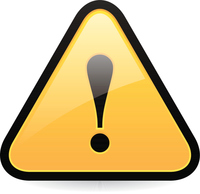Top Spray Equipment Purchasing Errors to Avoid
Posted by Andrew Greess on Dec 5, 2014
It is really amazing how much money companies spend buying the wrong power spray equipment. What are some of the causes of this problem, and what can be done to reduce purchasing mistakes and dollars wasted on spray equipment? Here are some common mistakes.
Buying one Sprayer to Meet All your Spraying Needs When designing a sprayer to use for all possible needs and applications, the sprayer often does none of them well. For example, if a landscape company wants a sprayer to do pre- and post-weed control, deep root fertilization and tall-tree spraying, they’ll probably end up with a rig that does not do a good job on any of them. Determine which applications will comprise 80 percent of the work for that vehicle and design a sprayer to solve that problem. Find another way to solve the other 20 percent.
Purchasing the Wrong Equipment Here’s an example: A pest control company bought a sprayer because it was available on the day the purchaser walked into the vendor’s shop. When company employees started using the sprayer, they weren’t getting the pressure or volume they needed. One quick look at the equipment explained why. The sprayer was built with a centrifugal pump and 300’ of ½” hose. Centrifugal pumps are designed for volume, not pressure. This is a physics problem: The low-pressure centrifugal pump couldn’t push the chemical through that much hose. Make sure components are properly matched.
A second example is buying the wrong size tank. A tank that’s too small reduces productivity because of the time needed to fill up. A tank that’s too big doesn’t allow enough storage space on the truck, plus the water weight impacts gas mileage and truck repair expense.

Buying Only on Price Too many companies look only at the purchase price of equipment, not the actual cost or value. An example of value: Some gas engines cost more than most other engines, but they’ll last longer, start on the first pull and have fewer problems. It’s also easier to find replacement parts for gas engines.
Another example of cost: The same spray tech who bought the aforementioned sprayer with the centrifugal pump, broke the pull cord on the gas engine. Because the recoil was too close to the side of the vehicle, the sprayer had to be unbolted and removed from the utility vehicle to replace the pull cord. A 10-minute job became an hour-long job. The company paid the spray tech to sit and wait, while paying more for repairs than would’ve been necessary had the sprayer been designed properly.
Viewing Spray Equipment as an Expense, Rather than a Strategic Investment Expenses are to be reduced, and investments are to be optimized, so how can your sprayer support your brand, marketing, operating and employee retention strategies?
- Example 1: A custom rig will cost more than an off-the-shelf one. With a custom rig that allows an extra toolbox on a vehicle, a technician can carry equipment to offer additional services at the client location (e.g., rodent, bee, animal capture, exclusion, etc.).
- Example 2: An electric hose reel adds about $350 to a rig cost, but this investment is small if a technician can do one extra job a month or doesn’t quit to work for another company that pays more, or the company avoids sick time for a tech’s bad back.
When you need professional spray equipment, parts and supplies, pest control and landscape companies, look to Qspray.com for everything you need to be your trusted resource.

